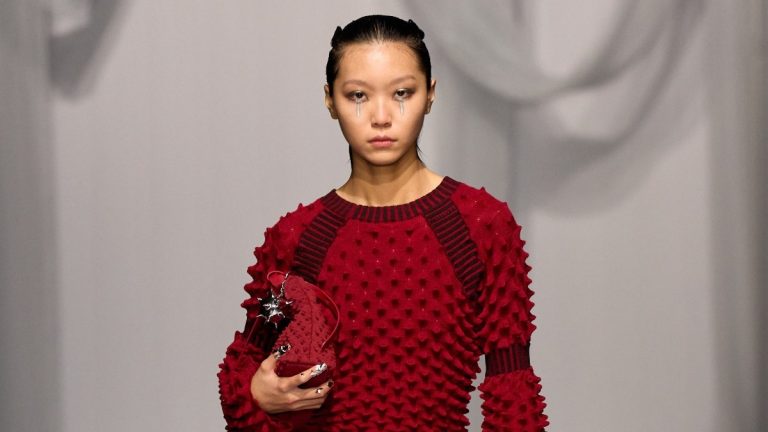In the UK, disabled people have an estimated annual spending power of around £274 billion. “It’s not just about giving blind and low-vision people a more accessible experience, it’s also about brands understanding that if they adopt more of [these inclusive practices] they’ll open themselves up to a community of [millions] of low-vision people globally,” says Cofone. “There’s the business side of it, too: if we educate the community and let them understand what a key piece in a collection is, they’ll feel empowered and want to spend money.” Outside of fashion week, brands could implement tactile clothing labels and online descriptions of garments, compatible with screen readers, to become more inclusive to this community, she adds.
Guests at the show included Edwards, research analyst Jane Manley, who works at the Royal National Institute of Blind, head teachers of a school for blind and low-vision children in London, and various attendees of Hair & Care’s workshops.
“It means so so much to me as a blind model and fashion lover to go to London Fashion Week. I’ve always wanted to get a feeling of what fashion truly means and the vision behind the designs; the thoughts, the feelings and the meaning behind the collection,” says Edwards..
Lo says the fabric swatches were easy enough to gather, but it took a few attempts to get the audio descriptions right. “It was a really interesting exercise. The vernacular used to describe a collection is completely different when you’re describing it to someone who doesn’t have sight,” he says. For instance, he had to be specific about how he described a checked fabric: “The pattern is made up of little squares, and is classically worn in the office.”
It was an opportunity for storytelling, he continues. “I spent a lot of time talking about the concepts, more so than the fabrics. Going through the collection and translating the visual concept through a story has always been more interesting to me anyway, so it’s really beautiful to have an audience that cares about the story.”
The whole process took a fair bit of preparation — Lo sent the audio files to the Hair & Care team over a week before the show. Lo says he tends to have the collection ready in plenty of time, so this wasn’t a challenge for him, though other designers who are making changes up until the last minute might have to be mindful of the additional time needed to create the audio files and swatches. Lo confirmed the running order of the looks the night before the show to ensure the files were in the correct order.
Guests appreciated the effort. “Blindness allows me to see more than any sighted person would, and going through the ‘touch tour’ [with Chet] allowed me to truly connect in a deeper way to each garment, and hear straight from the designer why it’s so important for the model to wear the exact fabrics, shades and designs he has picked,” says Edwards. “This is the true meaning of beauty — a world where everyone can understand fashion and be included in, not only high street fashion, but high fashion, so we have the freedom no matter who we are, to decide who we want to be and what we want to wear.”
The experience has been a testament to how brands should practise empathy when considering their show audience. Lo says he’s learnt a lot in the process. “Now that we understand what these guests need, we can definitely implement it into our next season.”
Comments, questions or feedback? Email us at feedback@voguebusiness.com.


